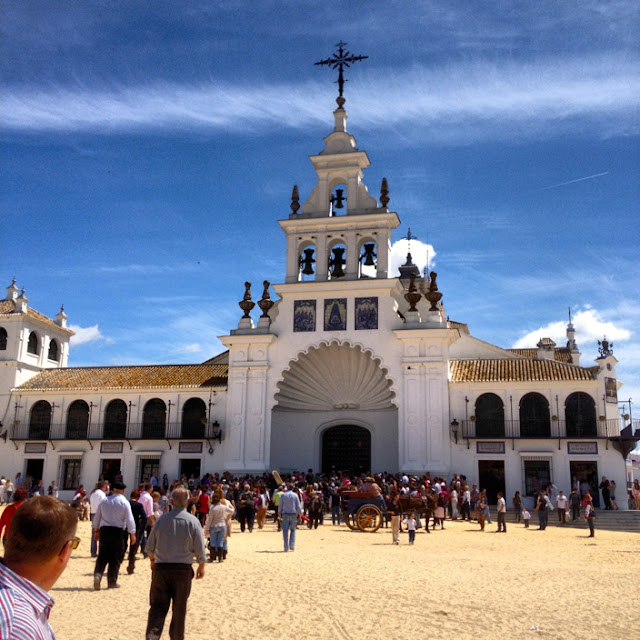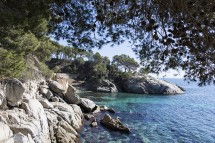

May 21
El Rocío, Andalusia. Spain
The hunter immediately took the image and with great effort moved it to the town of Almonte, following his wishes. The effort to remove the image and the fatigue that Gregorio suffered made him fall asleep on his way to the town. When he walk up, the image had disappeared. He went back to the place he found her first and there she was!
Again, he made his way to Almonte by his own and when he arrived he told what happened to the priest of the village and to some residents of the village. They went to the place the hunter told he found the image and they all saw it there, they adored the pilgrim image’s beauty despite the time it had been exposed to inclement weather.
She was taken in procession to the village where she remained while they built a small chapel and prepared an altar to place the sacred image. They used the original trunk where she was found as a pedestal.
In the mid-seventeenth century, the Virgin was proclaimed patroness of Almonte and the people started to call her “Virgen del Rocío.” Earlier this century she was canonically crowned by the Cardinal Archbishop of Seville, Don Enrique Almaraz and Santos.
The Gothic image is built in birch wood and according to experts reveals the style of the thirteenth century.
It has been amended several times, the first time when she was found and after in the mid-eighteenth century that suffered slight modifications to be adapted to fashion dress and other images of that time.
The Virgin was solemnly crowned June 8, 1919, by the Archbishop of Seville, Cardinal Almaraz, after approval of Pope Benedict XV.
Nowadays, there are more than a hundred guilds both in Spain and abroad affiliated to the Almonte matrix brotherhood. Mainly locations in the provinces of Cadiz, Seville and Huelva, but they are present all over Spain in places such as Toledo, Granada, Madrid, Málaga, Valencia and Ceuta. Many other Spanish and foreign devotees make pilgrimage on their own, or join one of these guilds to make the way.
The so called path is the way each brotherhood needs to walk from their starting point to the Chapel of El Rocio, where they all merge and pay homage to the Virgin.
To make bearable the way, pilgrims prepare adapted waggons, which travel with the simpecado symbol and do their way with other congregations in a cart pulled by oxen, which represents both the brotherhood and their devotion to the Virgin.
The hymn to the Virgin del Rocio, the road, the procession, and all the traditions that surround this unique pilgrimage, is the centrepiece of the lyrics of many sevillanas rejoicing pilgrims.
Overnight stops at different locations of the road are specially emotive because all pilgrims pray the Salve before retiring to rest and continue the march the next day.
Every year’s Whit Monday, the Virgin marches in a procession through the streets of the village, over the shoulders of Almonte’s people. This act ends the pilgrimage, and after it the pilgrims start their way back to their respective starting points.
Different acts of the procession way had become very popular, as the passage of the guilds by the Burning River, the presentation of all congregations to the parent and brotherhood in the village or the jumping over the chapel’s fence by the Almonte’s people to take the Virgin in procession.
All pictures are taken with my iPhone. Sorry if quality is not the best one. The segway photo was taken by natureway.es
Comments
















Thanks for taking us on this wonderful armchair journey my friend.This was the perfect way to start my day.
thanks Valli, you can always have it in real time ;D. Just a few hours away… that shouldn’t be a problem, right? Hugs to you.